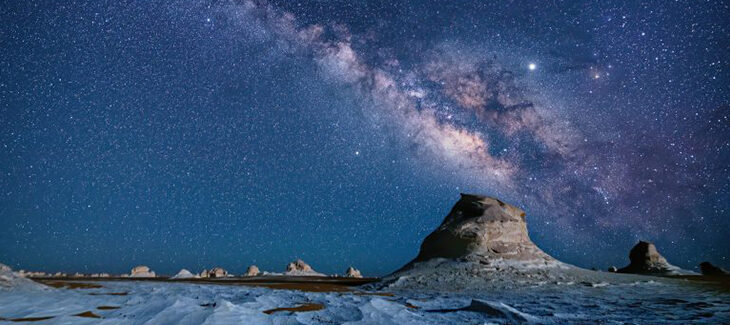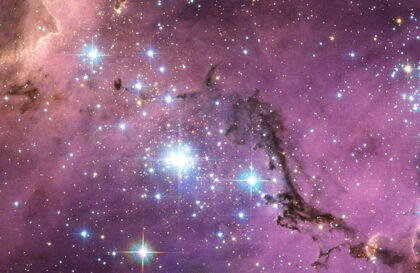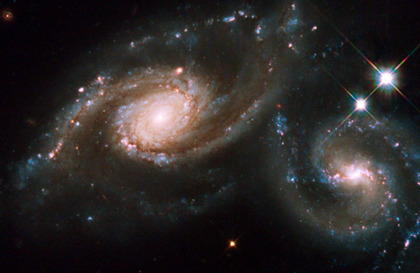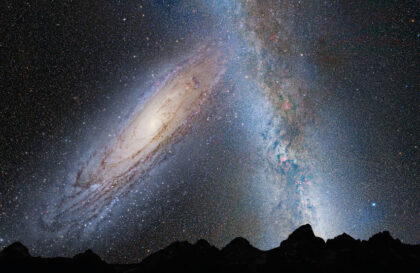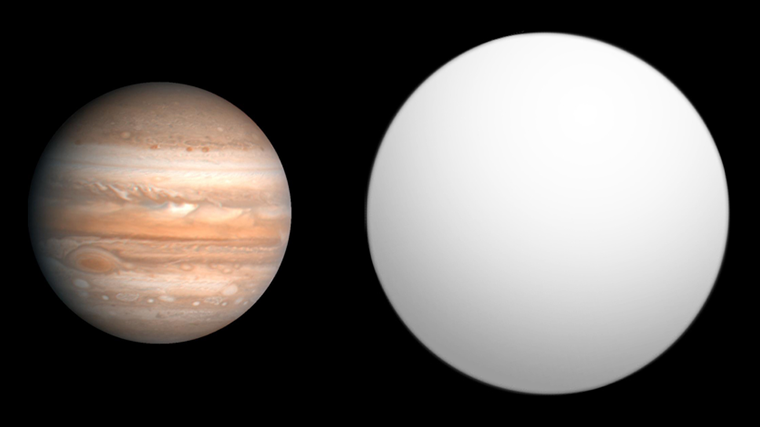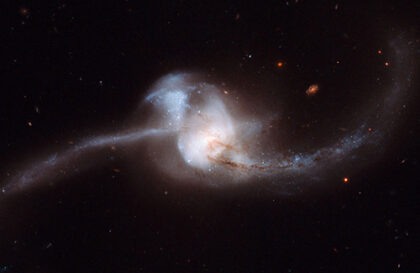The Milky Way is a spectacular spiral galaxy with unique features. Its size is estimated at about 100,000 light years. The galaxy has a central bulge surrounded by four spiral arms, among which two large and two smaller ones stand out. The main arms, Perseus and Sagittarius, give the galaxy its unique appearance. It is worth noting that the Earth’s Sun is located in one of the two smaller branches, the arm of Orion.
In this artist’s concept of the Milky Way, you can see the sun’s location below the central bar, at the inward side of the Orion Arm (called by its slightly dated name, the Orion Spur). The Orion Arm lies between the Sagittarius Arm and the Perseus Arm. Credit: NASA/ JPL/ ESO/ R. Hurt
Although the Milky Way is a true cosmic epic, many stars in this galaxy remain invisible. This is because there is a galactic bulge filled with stars, gas, and dust in the center of the galaxy. There is also a supermassive black hole at the galaxy’s center, making observing this region extremely difficult.
Interestingly, earlier astronomers believed that all stars in the universe belonged to the Milky Way. However, our imagination underwent a correction in the 1920s thanks to the discoveries of Edwin Hubble, the American astronomer who gave rise to the famous space telescope. Hubble made essential measurements of the distance to the Andromeda Nebula, which we now know as the Andromeda Galaxy. His work revealed that this galaxy is so far away from us that it cannot be part of the Milky Way and revealed the boundless spatial infinity of the Universe.
In 1995, the Hubble Space Telescope captured a photo that revealed a crucial moment in star formation about seven billion years ago. However, the latest discoveries of astronomers significantly reshaped our understanding of this process. This photo, known as the “Hubble Deep Field,” was captured by the Hubble Optical Telescope. Recent studies indicate that much of the early star formation was obscured by dense dust clouds. These clouds hid the stars and turned their light into infrared radiation, making them invisible to the Hubble Space Telescope. Despite these challenges, the Herschel Space Observatory penetrated this previously hidden region of space with infrared waves, revealing far more stars than ever before.
The Gaia mission, successfully launched, is currently studying more than a billion stars in the Milky Way. This mission is a follow-up to the successful Hipparchus mission, which initially determined the exact position of one hundred thousand stars and another million stars with less precision. Each star will be observed 70 times during the Gaia mission. The observations will be extremely accurate, recording the stars’ positions, distances, movements, and changes in brightness.
Artist’s concept of ESA’s Gaia space observatory. Its job is to study our home galaxy, the Milky Way. Credit: D. Ducros/ ESA.
The two most common methods used to estimate the number of stars in the Milky Way are using the structure and luminosity of the galaxy and multiplying the number of stars in the Milky Way by the number of galaxies in the Universe.
Estimates of the number of stars in the Milky Way range from 200 to 400 billion, but some estimates suggest even higher numbers. Estimates vary depending on the average stellar mass used in the model, and different models have been used. The most common answer for the number of stars in the Milky Way is between 100 and 400 billion stars. Astronomers can estimate the number of stars in a galaxy by measuring the color and brightness of starlight. Scientists estimate that there are 70 sextillion stars in the universe.
Banner image: Earthsky/ Amr Abdulwahab captured this image of the Milky Way on July 8, 2022.
|Image credit:
https://earthsky.org
https://earthsky.org
